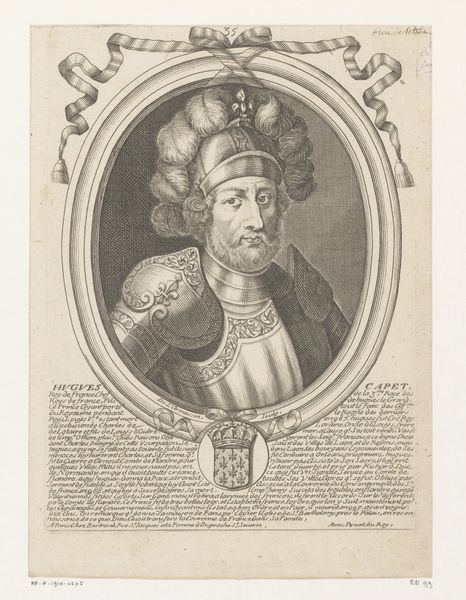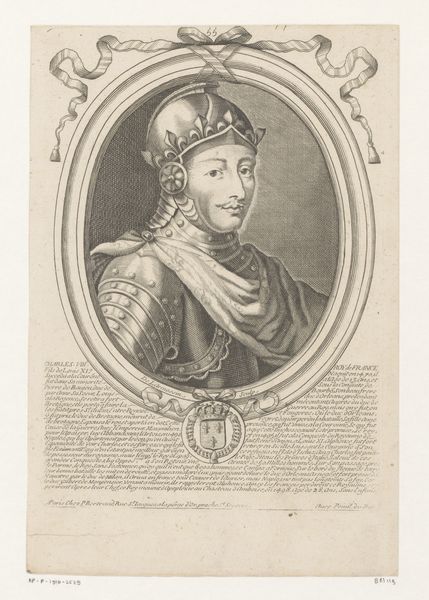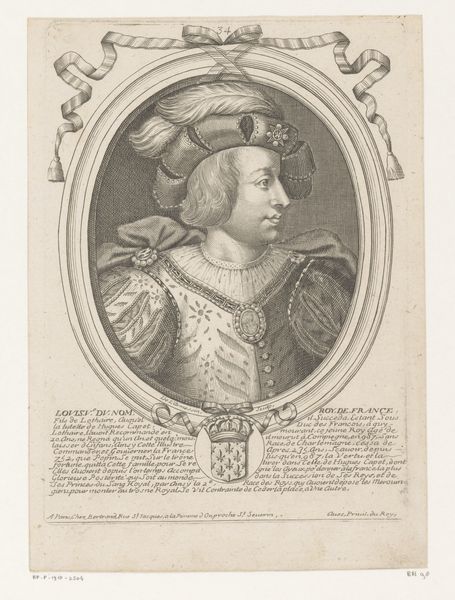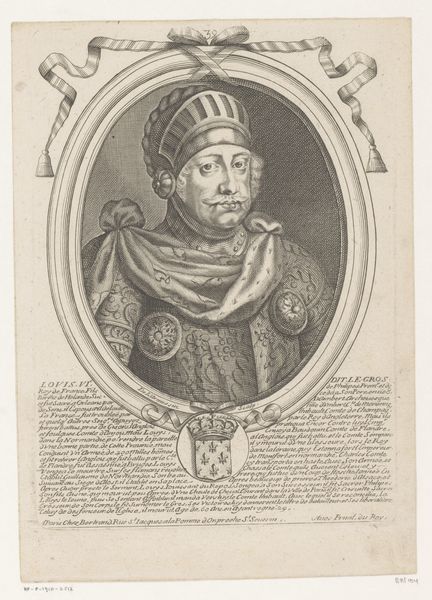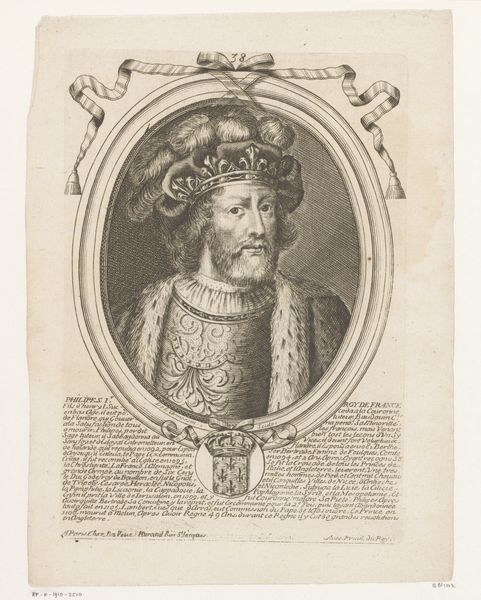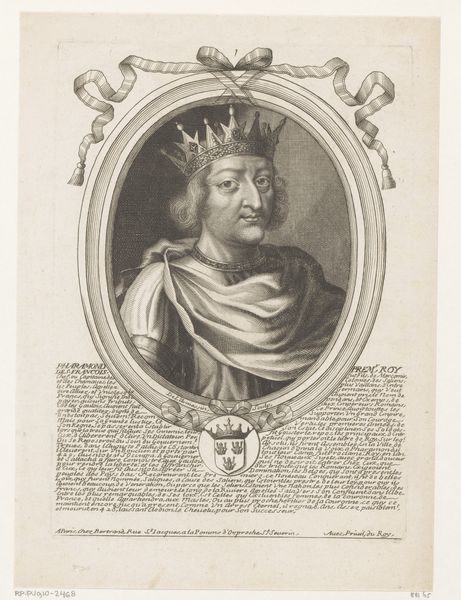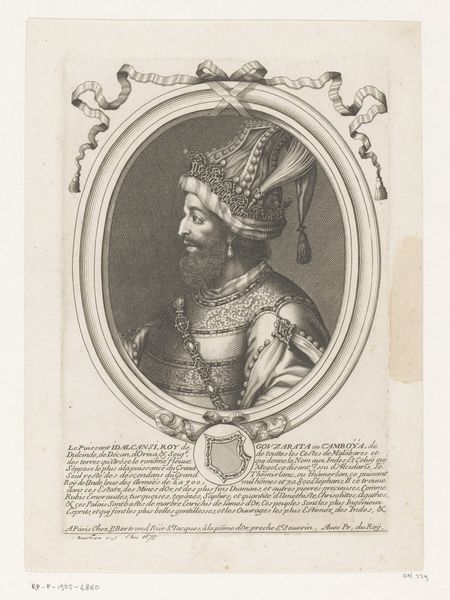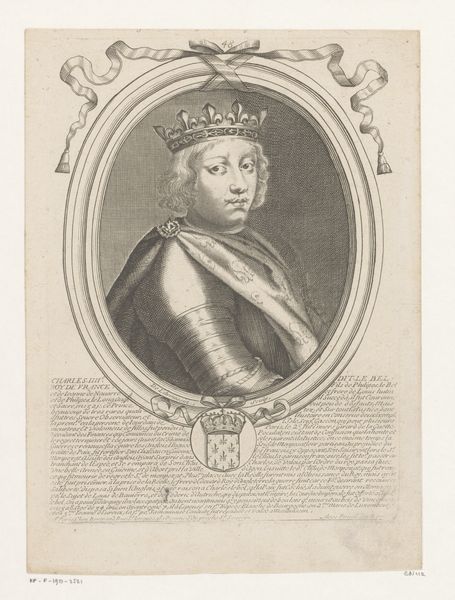
print, engraving
#
portrait
#
baroque
# print
#
old engraving style
#
personal sketchbook
#
history-painting
#
engraving
Dimensions: height 234 mm, width 168 mm
Copyright: Rijks Museum: Open Domain
Curator: Looking at this print, made sometime between 1642 and 1678 by Nicolas de Larmessin I, titled "Portret van Filips III, koning van Frankrijk," I'm struck by its formal rigidity, a characteristic feature of Baroque portraiture. Editor: I immediately noticed the coldness. It's quite austere, wouldn’t you agree? There’s an emotional distance that seems imposed by the sitter’s position of power, amplified by the elaborate armor. What does this choice communicate about kingship, gender, and performativity? Curator: The armor itself speaks to a very specific visualization of power, and Baroque portraiture consistently leaned into such imagery to solidify monarchical authority. Consider, for instance, the conventions in place at the time surrounding portraiture of monarchs; prints like these helped construct a ruler’s persona, projecting strength, piety, and lineage to different populations within, and even outside, France. Editor: Exactly. The symbols matter deeply. This portrait, distributed widely as it likely was, actively participates in shaping collective perceptions. We must acknowledge the function of the art object to advance social constructions of gender, in that only particular performances of masculinity— such as a king outfitted for battle—were validated. Curator: Moreover, the placement within the oval frame and surrounded by the detailed text emphasizes his defined status. The technique used, engraving, further allows for fine lines and detailing, meticulously capturing textures and patterns in the armor and fabrics, thereby enriching our understanding of 17th-century material culture. Editor: Precisely. And understanding the period's fascination with genealogy, the family crest further reinforces claims to power, grounding it not only in material reality but also fabricated claims of lineage. To that end, how does it potentially sanitize colonial exploitations that ensured the King of France maintained a wealthy lifestyle? Curator: It forces us to ask difficult questions and to confront art’s complicity. It encourages the acknowledgement of a fuller, more difficult art history. Editor: Which also calls us to look beyond idealized imagery to address contemporary realities more justly. Curator: An enriching, thought-provoking angle! Editor: It is a necessity for all conversations involving art and visual culture.
Comments
No comments
Be the first to comment and join the conversation on the ultimate creative platform.
